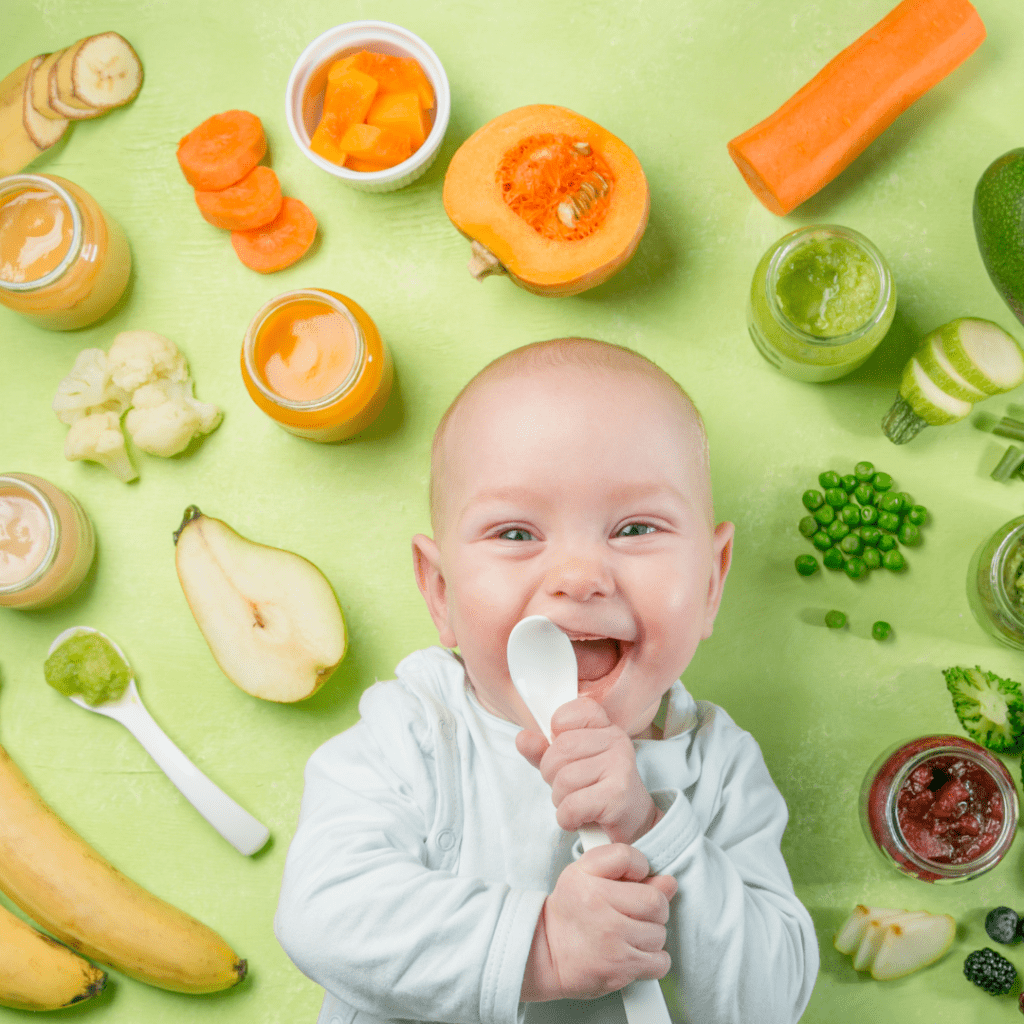Introduction:
Feeding your baby healthy and nutritious food is of utmost importance in their early stages of development. In this guide, we will explore the benefits of providing organic food to your little one and offer an overview of some delicious and nutritious baby food recipes. Additionally, we will discuss the advantages of homemade baby food and how it can contribute to your baby’s overall well-being.
Choosing the Right Ingredients of Baby Food Recipes:
When preparing baby food, it’s crucial to select the right ingredients that will nourish your little one and support their growth and development. Here are some essential considerations:
Opting for organic fruits and vegetables:
Organic fruits and vegetables are an excellent choice for baby food recipes diet. They are grown without the use of synthetic pesticides or fertilizers, reducing the risk of chemical exposure. Organic produce also tends to have higher nutrient content, which is beneficial for your baby’s health. Look for organic options when selecting fruits and vegetables for homemade baby food.
Avoiding additives and preservatives:
To prioritize your baby’s health, it’s best to avoid additives and preservatives in their food. These substances can be found in processed or packaged foods and may not be suitable for your baby’s delicate digestive system. Opt for fresh, whole ingredients when preparing homemade baby food to ensure it is free from unnecessary additives.
Selecting the appropriate protein sources:
As your baby’s nutritional needs evolve, it’s important to introduce appropriate protein sources into their diet. Protein supports their growth and development, so ensure you choose age-appropriate options. Soft cooked meats like chicken, turkey, or fish, as well as legumes and tofu, can provide valuable protein. It’s essential to prepare proteins in a way that is safe and easy for your baby to consume and digest.
By opting for organic fruits and vegetables, avoiding additives and preservatives, and selecting appropriate protein sources, you can provide your baby with a diet that promotes their overall well-being and healthy growth. Always consult with a healthcare professional or pediatrician for specific dietary recommendations based on your baby’s individual needs.
Basic Preparation Techniques of Baby Food Recipes:
Preparing homemade baby food recipes doesn’t have to be complicated. Here are some easy and effective techniques to help you create delicious and nutritious meals for your little one:
Steaming fruits and vegetables:
Steaming is a gentle cooking method that helps retain the nutrients and natural flavors of fruits and vegetables. Simply place the produce in a steamer basket over boiling water and let them cook until tender. Steamed fruits and veggies can then be pureed or mashed into a baby-friendly consistency.
Baking or roasting certain ingredients:
Baking or roasting is another simple way to prepare baby food recipes. It can enhance the natural sweetness and flavors of fruits or vegetables. For example, you can roast sweet potatoes, apples, or squash in the oven until they become soft and easy to mash. This method adds depth and richness to the flavors of the ingredients.
Blending or pureeing food to desired consistency:
After cooking your chosen ingredients, you can transform them into a smooth and baby-friendly texture by blending or pureeing. A blender, food processor, or immersion blender can be used to achieve the desired consistency. Start with a smooth puree for younger babies and gradually introduce more texture as they grow.
By steaming, baking or roasting, and blending or pureeing, you can easily prepare homemade baby food with all the goodness and flavors intact. Remember to let the food cool before serving it to your baby and follow any age-appropriate guidelines for introducing different textures and ingredients. Enjoy exploring the world of flavors as you nourish your little one.
Healthy and Organic Baby Food Recipes:
Preparing homemade baby food recipes allows you to have control over the ingredients and provide your little one with nutritious meals. Here are some easy and delicious baby food recipes using organic ingredients:
Avocado and Banana Mash
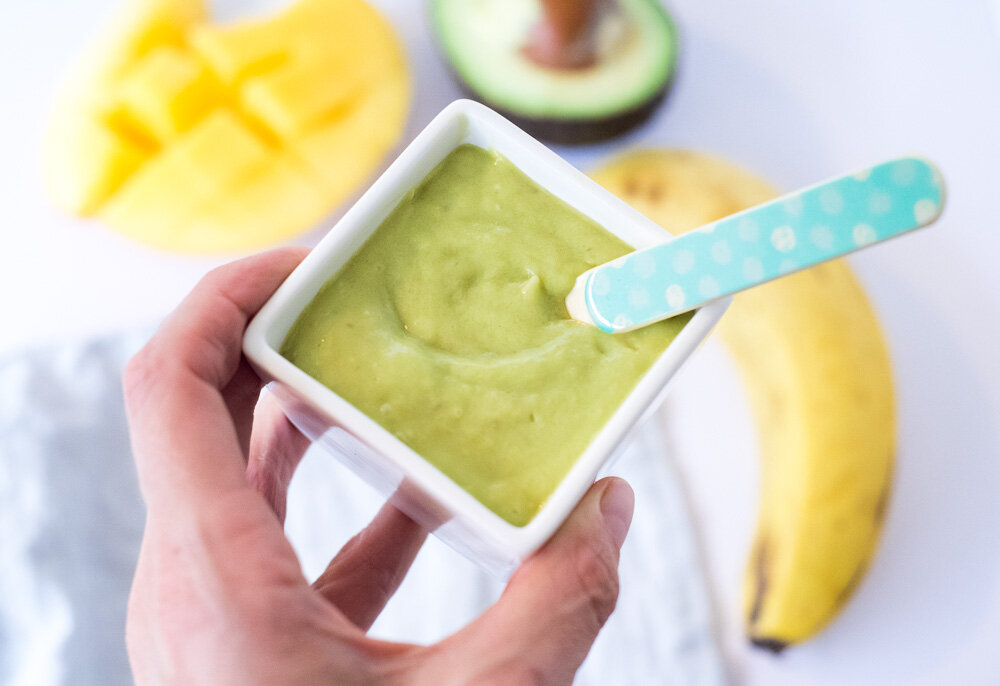
Recipe 1: Avocado and Banana Mash
Ingredients:
- 1 ripe avocado
- 1 ripe banana
Instructions:
- Cut the avocado in half, remove the pit, and scoop out the flesh.
- Peel the banana and slice it into chunks.
- Place the avocado and banana in a bowl and mash together with a fork until smooth.
- Add breast milk, formula, or water as needed to achieve the desired consistency.
Nutritional benefits:
Avocado is packed with healthy fats and essential nutrients like vitamin E and folate. Bananas provide natural sweetness and are a great source of potassium and fiber.
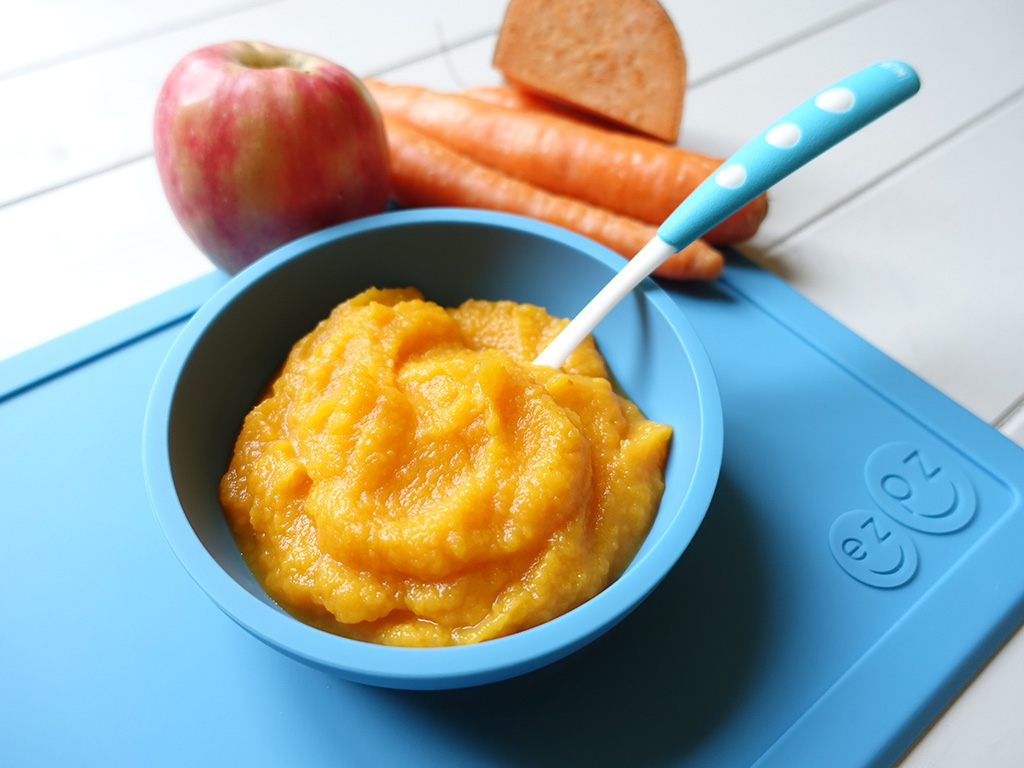
Sweet Potato and Apple Puree
Recipe 2: Sweet Potato and Apple Puree
Ingredients:
- 1 sweet potato, peeled and diced
- 1 apple, peeled, cored, and diced
Instructions:
- Steam or bake the sweet potato and apple until tender.
- Transfer the cooked sweet potato and apple into a blender or food processor.
- Blend until smooth, adding water or breast milk/formula to adjust the consistency if needed.
Nutritional benefits:
Sweet potatoes are rich in vitamins A and C, while apples add natural sweetness and provide dietary fiber.
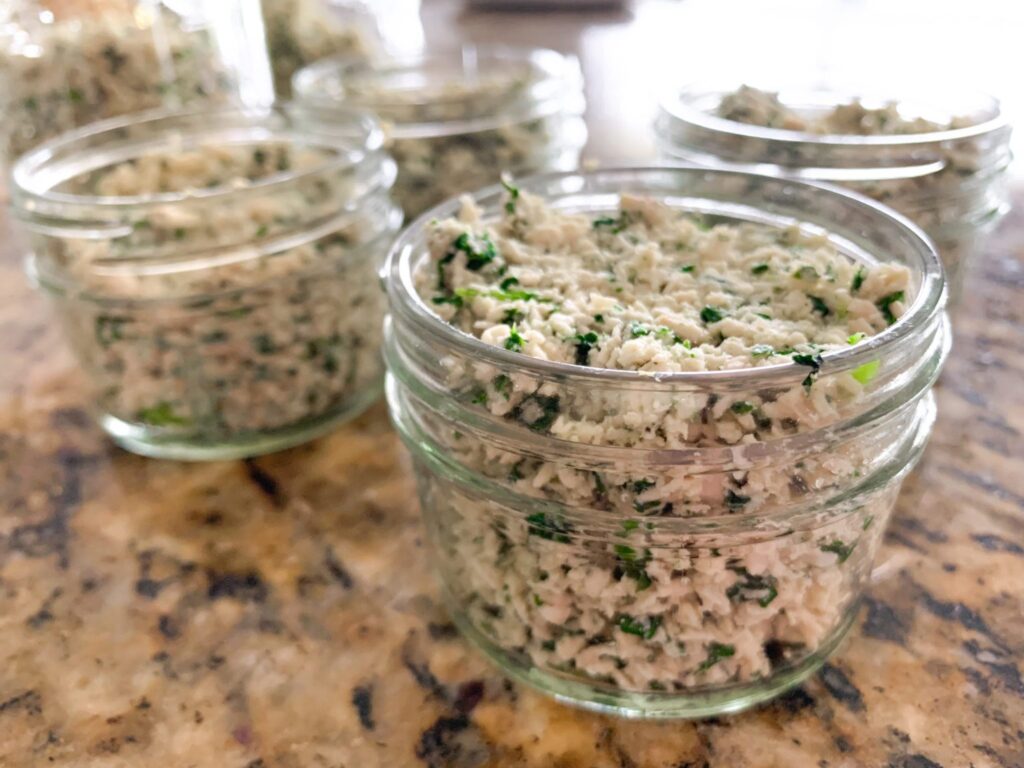
Spinach and Chicken Puree
Recipe 3: Spinach and Chicken Puree
Ingredients:
- ½ cup cooked chicken, finely chopped
- 1 cup fresh spinach leaves
Instructions:
- Steam or boil the spinach until wilted.
- Place the cooked chicken and steamed spinach in a blender or food processor.
- Puree until smooth, adding water or chicken broth to reach the desired consistency.
Nutritional benefits:
Spinach is a nutrient powerhouse, packed with iron, calcium, and vitamins A and C. The chicken provides protein necessary for your baby’s growth and development.
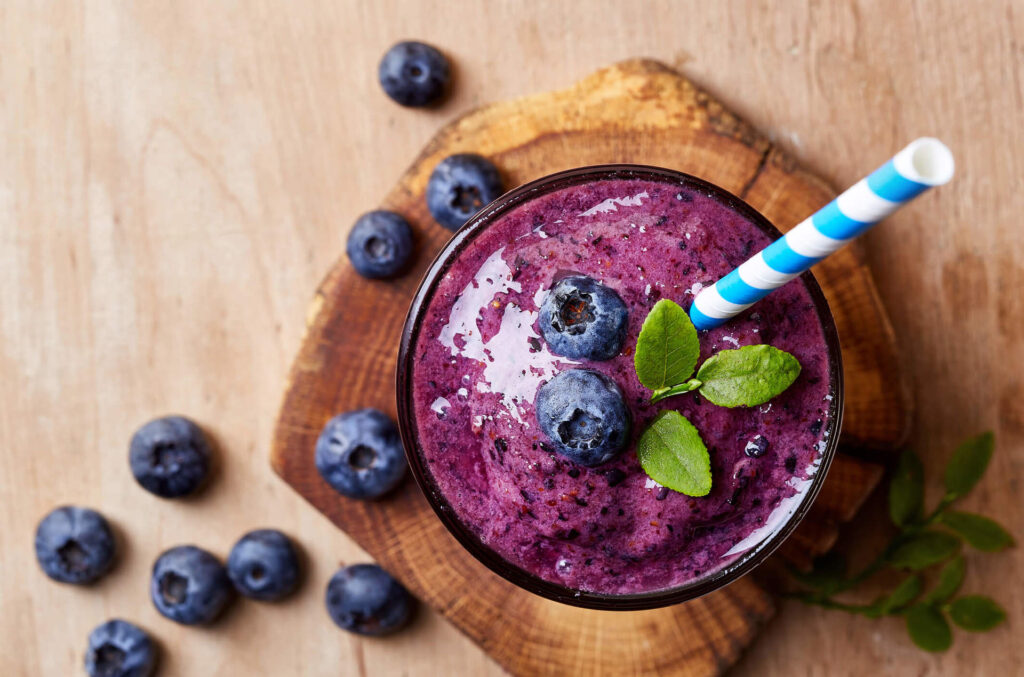
Blueberry and Yogurt Smoothie
Recipe 4: Blueberry and Yogurt Smoothie
Ingredients:
- ½ cup fresh or frozen blueberries
- ½ cup plain whole-milk yogurt
Instructions:
- In a blender, combine the blueberries and yogurt.
- Blend until smooth and creamy.
- Adjust the consistency by adding breast milk, formula, or water if desired.
Nutritional benefits:
Blueberries are rich in antioxidants and vitamins, while yogurt adds probiotics and calcium to support your baby’s digestive health and bone development.
These baby food recipes are just a starting point, and you can modify them to suit your baby’s taste preferences and dietary needs. Remember to always introduce new baby food recipes one at a time and watch for any signs of allergies or sensitivities. Enjoy preparing these wholesome, organic meals for your little one’s healthy and happy journey of baby food recipes exploration.
Tips and Tricks for Fussy Eaters of Baby Food Recipes
Being a parent or caregiver of a fussy eater can be challenging. If you’re tired of dealing with mealtime battles and want to encourage your picky eater to try new foods, we’ve got some tips and tricks for you. With a little patience and creativity, you can help expand their palate and make mealtimes a little less stressful. Here are some easy-to-read strategies to get you started:
A. Introducing new flavors and textures gradually for baby food recipes:
- Start small: Begin by introducing new foods in small portions alongside familiar favorites. This way, your fussy eater won’t feel overwhelmed or pressured to eat a large portion of something unfamiliar.
- Be persistent: Research shows that it can take numerous exposures to a new food before a child will accept it. So, don’t give up if they initially reject it. Keep offering the food in different ways, such as cooked and raw, and in various dishes.
- Fun presentation: Make the food visually appealing by arranging it in fun shapes or using colorful ingredients. Children are more likely to try something new if it looks exciting and interesting.
B. Combining flavors to enhance taste of baby food recipes:
- Pair with favorites: Combine new foods with familiar flavors your fussy eater already enjoys. For example, if they like cheese, try adding a small amount of a new vegetable to a cheesy pasta dish.
- Mix it up: Experiment with different cooking methods, seasonings, and sauces to enhance the taste of new foods. Roasting, grilling, or sautéing vegetables can bring out their natural sweetness and make them more appealing.
- Let them choose: Give your fussy eater some autonomy by allowing them to select their preferred seasonings or garnishes for certain dishes. This can make them feel more involved and excited about trying something new.
C. Picky eater strategies and mealtime routines of baby food recipes:
- Set a routine: Establish a consistent mealtime schedule to create a sense of structure and predictability. Having regular meal and snack times can help your child feel more comfortable and more willing to try new foods.
- Develop a positive atmosphere: Make mealtimes enjoyable and stress-free by creating a pleasant environment. Avoid pressuring or bribing your fussy eater to eat. Instead, focus on creating a relaxed atmosphere where they can explore and taste new foods at their own pace.
- Get them involved: Encourage your child to participate in meal preparation. Whether it’s stirring ingredients or picking out fruits and vegetables at the grocery store, involving them in the process can make them more enthusiastic about trying new foods.
Remember, every child is different, and it may take time for your fussy eater to warm up to new flavors and textures. Be patient, celebrate even the small victories, and most importantly, lead by example by enjoying a variety of healthy foods yourself. With these tips and tricks, you’ll be well on your way to expanding their palate and creating a positive relationship with food.
Storage and Safety Guidelines of Baby Food Recipes
When it comes to handling and storing food, especially for babies and young children, safety is of utmost importance. To ensure that your little one’s meals are stored properly and free from contaminants, here are some easy-to-read storage and safety guidelines to follow:
A. Proper storage techniques for Baby Food Recipes:
- Refrigeration: Store opened jars or containers of baby food in the refrigerator at temperatures below 40°F (4°C). Use them within 48 hours to maintain freshness and minimize the risk of spoilage.
- Freezing: If you make homemade baby food in batches, freezing is a great way to preserve it. Use airtight containers or freezer-safe jars to prevent freezer burn. Label each container with the contents and date for easy identification.
- Portion control: Consider freezing baby food in small, individual portions to avoid thawing and refreezing multiple times. This helps maintain the quality of the food and reduces the risk of contamination.
B. Safe reheating and thawing methods:
- Thawing: When thawing frozen baby food, the safest method is to transfer it from the freezer to the refrigerator overnight. Alternatively, you can use the defrost setting on your microwave or place the sealed container in a bowl of warm water. Avoid thawing baby food at room temperature to prevent bacterial growth.
- Reheating: When reheating baby food, ensure that it reaches an internal temperature of at least 165°F (74°C) to kill any potential bacteria. Stir well and test the temperature before serving to prevent burns. Discard any leftover food that has been reheated but not consumed.
C. Baby Food Recipes safety precautions to avoid contamination:
- Cleanliness: Wash your hands thoroughly with soap and water before handling baby food. Wash utensils, cutting boards, and containers used for preparing and storing baby food in hot, soapy water. Avoid cross-contamination by using separate utensils and surfaces for raw meats and other ingredients.
- Hygiene: Ensure that all baby feeding equipment, such as bottles, nipples, and spoons, are properly washed and sterilized before each use. Follow manufacturer instructions for sanitizing and sterilizing methods.
- Fresh ingredients: Use fresh and high-quality ingredients when preparing baby food. Check for expiration dates on store-bought products and discard any expired or spoiled items. Inspect homemade baby food for any signs of mold, discoloration, or off-odors and discard if necessary.
By following these storage and safety guidelines, you can provide your baby with nourishing and safe meals. Remember to trust your instincts and if you have any concerns about the quality or safety of baby food, it’s always best to err on the side of caution and consult a healthcare professional.
Conclusion:
In conclusion, baby food recipes prioritizing the health and well-being of your little one by providing healthy and organic baby food recipes is crucial. By following proper storage and safety guidelines, you can ensure that their meals are not only delicious but also safe to consume. Let’s recap the key points discussed:
As you navigate the journey of feeding your baby, remember that every child is unique, and their preferences may change over time. Stay flexible, get creative, and enjoy the process. With the right knowledge and approach, you can make mealtimes a positive and enjoyable experience for both you and your little one. Remember, you are doing an incredible job in providing the best nutrition for your little one – keep up the great work!
